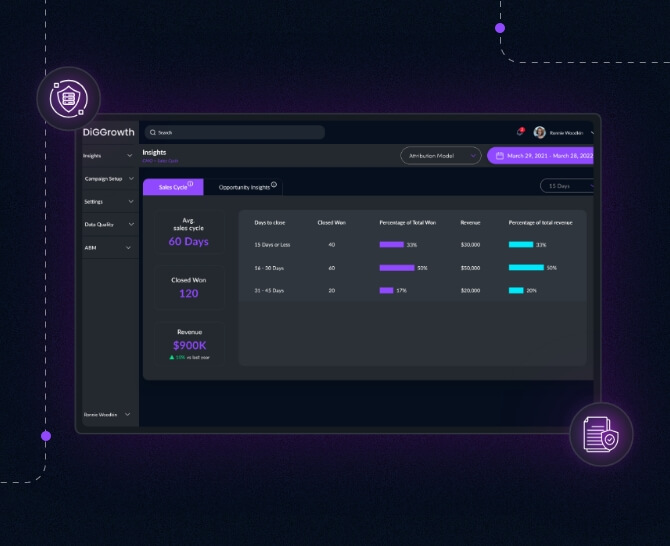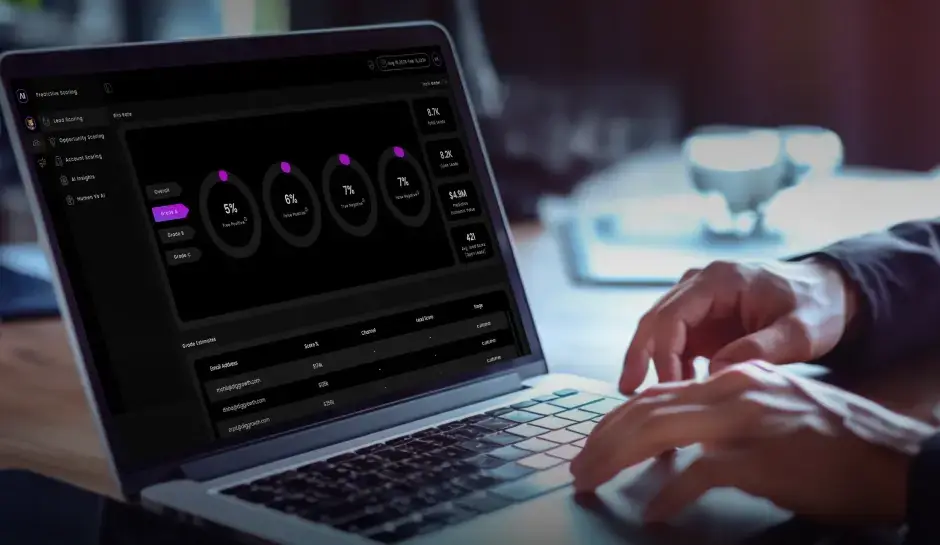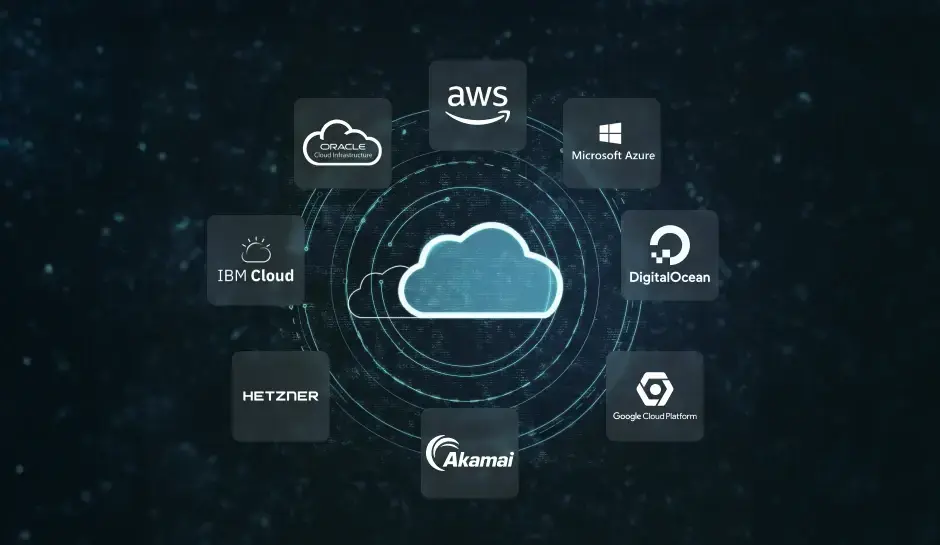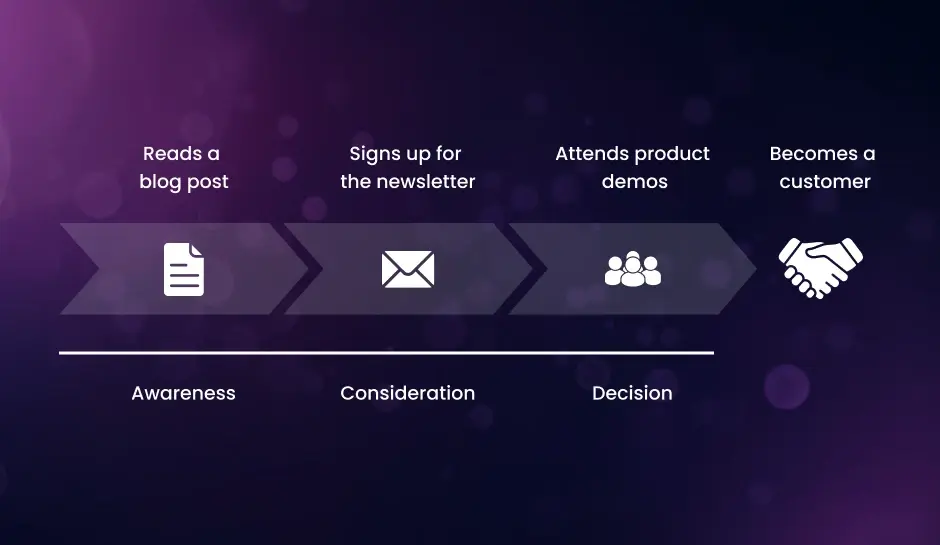
Data Governance Challenges & Best Practices
With the proliferation of data, it is imperative for businesses to ensure that the data they have is high quality, secure, and relevant. This is where data governance comes in, but it is not without its challenges.
The importance of data in today’s technology-driven business environment needs no introduction. Digital transformation is impossible without the use of data and analytics and achieving day-to-day professional competence. But, for your enterprise to become data-driven, this data should be of high quality, secure, relevant, and accessible. Data Governance ensures this and brings people, technologies, and processes together.
What is Data Governance?
It is the process of managing data and ensuring high availability, usability, and integrity. Data governance involves defining roles, policies, metrics, and standards that govern the use of data in an enterprise. It minimizes risks, meets data compliance laws, increases the value of data, and reduces the costs of managing data.
A well-run data governance program helps your enterprise at every level, be it strategic, tactical, or operational. These practices are being fast adopted in businesses across industries. The Data Governance market which was valued at $1.81 billion in 2020 is expected to reach $5.28 billion by 2026, a testimony to its growing importance.
Common Data Governance Challenge
The importance of business data is continually growing. As organizations capture data from different touchpoints and their volumes surge, it is posing new challenges to the quality, security, and usability of data. Let us turn our attention to some of the common data governance challenges that you need to be aware of –
- Absence of Data Strategy
- Poor Data Quality
- No Leadership
- Siloed Data
- Lack of Control
- Data Security Issues
Small and medium enterprises have limited resources to run an effective data governance program. This can lead to a lack of marketing strategy where other priorities override the importance of allocating resources toward a data governance program.
As organizations generate tons of data, they face the issue of quality. It is a known fact that business data can become obsolete. At least 30% of the data decays every year and this can affect the outcome of all data-related activities. Focusing on data hygiene can improve data governance.
We have already highlighted the role of people in data governance. Data governance isn’t merely a technical process that can be left to automation tools. The absence of a person or team who can give direction to the data governance model in an organization can reduce the impact of the whole exercise.
Compaines collect data from Company Dashboard Software various sources that can include multiple touchpoints. This can result in data from various sources becoming siloed. This isn’t an ideal scenario as this can restrict you from reading the broad picture of the market.
The first step to implementing data governance is to have control over enterprise data. However, many organizations lack basic rules concerning access and use of data. They do not have laid protocols for the storage, management, and retrieval of data.
Data security is crucial for every enterprise. But this is one area where there is a lot of ambiguity. Merely storing data in the cloud doesn’t make it secure. Your data remains vulnerable to misuse and unsecured data poses the greatest challenge to data governance.
Data Governance Best Practices
By now you are aware of the importance of data governance and know the common challenges. These challenges can be mitigated when you adopt the best practices for data hygiene or data governance.
Here are some of the things your organization must do to leverage data governance.
Set Up an Organization-Wide Goal
We have already touched upon the fact that data often remains isolated in silos. As part of your data governance strategy, it is important to have a strategic goal at an organizational level. It should cover all aspects of your business process including revenue, growth, risk mitigation, and efficiency.
Corral Data from Different Sources
Business data is collected from various sources and across different domains. For instance, your organization may be collecting data from sales, finance, and accounting teams apart from the data you generate about the customers at different touchpoints. Corralling this data should be part of your data governance strategy. This helps your organization have a bird’s eye view of the market.
Always Focus on The Big Picture
It is important to have the big picture in mind while embarking on a data governance program. As we have already stated, data governance involves people, processes, and technologies and hence you need to create the perfect synergy between the three. Hire the right people, choose the best tools, and set a well-defined process for your data governance objective.
Build Data Governance Framework
You must have clearly stated policies and rules on the use and access of your data. How is the data used in the organization? Who has access to the data and who monitors it? Who oversees quality standards and compliance norms? You should build a solid data governance framework that gives direction to your team on the use of this data. There should be no ambiguity in the process. It is important to define the roles of individuals and teams with clearly set deliverables.
Incorporate Metrics into Data Governance
A data governance model sans metrics would be of little use to your organization. Your team must be able to use data objectively and map progress against the goals. It is important to incorporate measurement metrics and analytics into the model right from the start. This would make the model usable and productive for your organization.
Educate the Team on the Importance of Governance
This might sound obvious, but it is often one of the most overlooked aspects of data governance. You can achieve success with these practices when it is followed at every level in the organization. It isn’t the responsibility of select individuals or a team but should become part of the organization’s work culture.
Understanding Data Governance
Data governance is crucial for businesses to effectively manage and utilize their data assets. By defining data and its significance in business processes and decision making, organizations are better equipped to understand its value and take necessary actions to ensure its accuracy, reliability, and security.
In the context of data management, governance refers to the set of policies, processes, and controls put in place to ensure that data is properly collected, stored, accessed, and utilized. It involves establishing roles and responsibilities, defining data standards and guidelines, and enforcing compliance with regulations and industry best practices.
The benefits of implementing robust data governance practices are manifold. Firstly, it enhances data quality and integrity, promoting trust in the information used for critical business operations and decision making. This, in turn, leads to improved efficiency, as stakeholders can rely on accurate and consistent data to drive their actions and strategies.
Data governance also plays a crucial role in ensuring regulatory compliance. By establishing controls and safeguards, organizations can mitigate the risk of non-compliance with data protection laws, privacy regulations, and industry-specific requirements. This not only minimizes legal and reputational risks but also inspires confidence among customers and stakeholders.
Furthermore, data governance empowers businesses to leverage their data as a strategic asset. It enables organizations to gain insights, identify patterns, and make informed decisions based on reliable and complete information. By breaking down data silos, promoting data sharing and collaboration, and facilitating data integration, businesses can unleash the full potential of their data for driving innovation and achieving competitive advantage.
Key Components of Data Governance
3.1 Data Quality Management
The importance of accurate, complete, and consistent data for effective decision making and business processes cannot be overstated. To ensure data quality, organizations need to implement strategies that address common data quality issues such as duplicate records, data inconsistency, and data completeness.
Implementing data cleansing and validation processes
Establishing data quality metrics and monitoring mechanisms
Regularly auditing and verifying data integrity
Providing training and awareness programs to promote data quality
3.2 Regulatory Compliance
In today’s data-driven world, legal and regulatory requirements regarding data privacy, security, and sharing are becoming increasingly stringent. To comply with these standards and mitigate risks, organizations need to establish policies and processes that prioritize data protection and privacy.
Understanding and adhering to relevant data protection and privacy laws
Implementing data security measures such as encryption and access controls
Ensuring proper data sharing agreements and consent mechanisms
Conducting regular compliance audits to identify gaps and address them
3.3 Data Access and Security
Managing data access and implementing robust security measures is crucial for safeguarding sensitive information and preventing unauthorized access. To achieve this, organizations need to define data access policies, implement access controls, and regularly audit their data access and security systems.
Defining data access levels based on job roles and responsibilities
Implementing strong authentication mechanisms, such as two-factor authentication
Regularly monitoring and reviewing access logs for potential security breaches
Educating employees about data security best practices and the importance of data access controls
3.4 Data Stewardship
Data stewardship involves assigning responsibility for managing and maintaining data assets within the organization. This includes establishing data ownership, defining data stewardship roles and responsibilities, and ensuring that data stewardship processes are in place to promote data accountability and governance.
Identifying data stewards for key data sets and domains
Defining data ownership and accountability within the organization
Establishing data stewardship processes, including data quality monitoring and issue resolution
Providing training and support to data stewards to enhance their data management skills
3.5 Data Integration
Organizations often have data coming from various sources and systems, making it essential to have seamless data integration processes. This ensures that data is consolidated, standardized, and made available in a unified view across the organization, enabling better analysis and decision making.
Defining data integration standards and best practices
Implementing data integration tools and technologies
Establishing data integration workflows and data mapping
Regularly monitoring and maintaining data integration processes
3.6 Data Classification and Categorization
Proper data classification and categorization is essential for effective data governance. A reliable framework should be implemented to classify and categorize data based on factors such as sensitivity, criticality, and value. This enables organizations to prioritize data protection efforts and allocate appropriate resources for data management.
Developing a data classification framework based on organizational needs
Defining data sensitivity levels and access controls accordingly
Educating employees about the importance of data classification and handling guidelines
Regularly reviewing and updating data classification policies
3.7 Data Lifecycle Management
Data lifecycle management involves managing the full lifecycle of data from creation to deletion. It encompasses data storage, usage, archival, and retention strategies to ensure data remains accessible, useful, and compliant with legal and regulatory requirements.
Establishing data retention policies based on legal and business requirements
Implementing data backup and recovery mechanisms
Defining data archiving and purging processes
Regularly reviewing and updating data lifecycle management policies
3.8 Data Governance Framework
An effective data governance framework is crucial for establishing a comprehensive approach to governing data. It involves outlining the principles, policies, and processes that guide data governance efforts within the organization.
Defining data governance goals and objectives
Identifying key stakeholders and their roles in data governance
Establishing data governance committees or teams
Developing data governance policies and procedures
3.9 Data Documentation and Metadata Management
Data documentation and metadata management are essential for gaining a comprehensive understanding of data assets within the organization. This involves creating and maintaining documentation such as data dictionaries and metadata repositories.
Documenting data definitions, data lineage, and data usage guidelines
Maintaining metadata repositories for easy data discovery and understanding
Implementing metadata management tools and processes
Regularly updating and reviewing data documentation for accuracy and relevancy
3.10 Data Governance Organizational Structure
A clear organizational structure is vital for effective data governance implementation. This involves defining roles, responsibilities, and reporting lines to ensure clear accountability and ownership of data governance efforts within the organization.
Identifying key data governance roles, such as data steward, data owner, and data custodian
Establishing reporting lines and communication channels for data governance
Providing training and support for individuals in data governance roles
Evaluating and adjusting the organizational structure as data governance needs evolve
Overcoming Data Governance Challenges
Identifying common challenges faced in implementing data governance initiatives
Data governance initiatives, while beneficial, can face various challenges during implementation. Understanding these challenges is crucial for successful data governance.
- Lack of clear objectives and goals for data governance
- Inadequate support and sponsorship from senior management
- Insufficient resources and funding
- Inconsistent data quality and integrity
- Limited organizational buy-in and resistance to change
- Complexity of data governance frameworks and policies
- Difficulty in establishing data ownership and accountability
- Lack of awareness and understanding among employees
- Strategies and best practices to overcome these challenges
To overcome these challenges in implementing data governance, organizations can adopt several strategies and best practices:
Clearly define and communicate the objectives and benefits of data governance to stakeholders
Secure senior management support and sponsorship to ensure organizational commitment
Allocate adequate resources, including budget and skilled personnel, to support data governance initiatives
Implement data quality management processes to ensure data accuracy, consistency, and completeness
Engage stakeholders and key individuals across the organization to foster buy-in and address resistance to change
Simplify data governance frameworks and policies to make them more accessible and understandable
Establish clear data ownership and accountability by assigning roles and responsibilities to specific individuals or teams
Provide training and education programs to enhance employees’ awareness and understanding of data governance
Final Thoughts
You can see why data governance is about people, processes, and technologies. A well-managed data governance model offers your organization a better understanding of the data. It improves your business process, productivity, and profitability. It is critical for capturing the macro and b2b marketing trends in the market and driving your business toward digital transformation.
Many organizations get it right with data governance, while others struggle in the absence of a data governance framework. If you are looking for an expert team that can harness data and accelerates your business growth, book a demo with DiGGrowth—a No-code Marketing Intelligence Platform. Drop us an email at info@diggrowth.com for more information.
Ready to get started?
Increase your marketing ROI by 30% with custom dashboards & reports that present a clear picture of marketing effectiveness
Start Free Trial
Experience Premium Marketing Analytics At Budget-Friendly Pricing.

Learn how you can accurately measure return on marketing investment.
Additional Resources
The Future of Marketing: How Predictive Lead and Account Scoring is Changing the Game
Can we, in this incredible marketing landscape driven...
Read full post postCloud Wars: A Comparative Analysis of Leading Cloud Vendors
How many companies are using cloud computing? Around...
Read full post postContent Marketing Attribution: Tracking Content Impact Across the Customer Journey
So, you've poured your heart into crafting the...
Read full post postFrequently Asked Questions
Data governance is the process of managing data within an organization to ensure its availability, usability, integrity, and security. It involves defining roles, policies, metrics, and standards to govern the use of data, minimizing risks, complying with data regulations, increasing data value, and reducing data management costs.
The common challenges of data governance include:
Absence of Data Strategy: Limited resources may lead to a lack of prioritizing data governance, resulting in the absence of a data strategy.
Poor Data Quality: As data volumes increase, maintaining data quality becomes a challenge, with approximately 30% of data decaying annually. Focusing on data hygiene can improve data governance.
Lack of Leadership: Data governance requires leadership to provide direction and ensure the effectiveness of the program.
Siloed Data: Data collected from various sources can become siloed, hindering a holistic view of the market.
Lack of Control: Some organizations lack proper rules and protocols for data access, use, storage, management, and retrieval.
Data Security Issues: Data security ambiguity poses a significant challenge to data governance, as storing data in the cloud alone doesn't guarantee security.
The best practices for data governance include:
Set Up an Organization-Wide Goal: Establish a strategic goal that covers all aspects of the business process, including revenue, growth, risk mitigation, and efficiency.
Corral Data from Different Sources: Collect and consolidate data from various sources and domains to gain a comprehensive view of the market.
Always Focus on The Big Picture: Create synergy between people, processes, and technologies by hiring the right individuals, selecting suitable tools, and defining a well-defined data governance process.
Build Data Governance Framework: Develop clear policies, rules, and roles for data usage, access, quality standards, compliance, and deliverables.
Incorporate Metrics into Data Governance: Use measurement metrics and analytics to objectively track progress and align data governance with organizational goals.
Educate the Team on the Importance of Governance: Promote a culture of data governance within the organization by ensuring all members understand its significance.
Data governance benefits organizations by:
Improving understanding of data and its quality
Enhancing business processes, productivity, and profitability
Enabling the capture of macro and micro market trends
Facilitating compliance with data regulations
Supporting digital transformation and data-driven decision-making
DiGGrowth is a No-code Marketing Intelligence Platform that offers expertise in harnessing data to accelerate business growth. With DiGGrowth, you can gain access to advanced data analytics and insights, facilitating better data governance practices. To learn more and explore how DiGGrowth can assist your organization, you can book a demo by contacting them at info@diggrowth.com.
 Subhadeep Bhattacharjee
Subhadeep Bhattacharjee 

